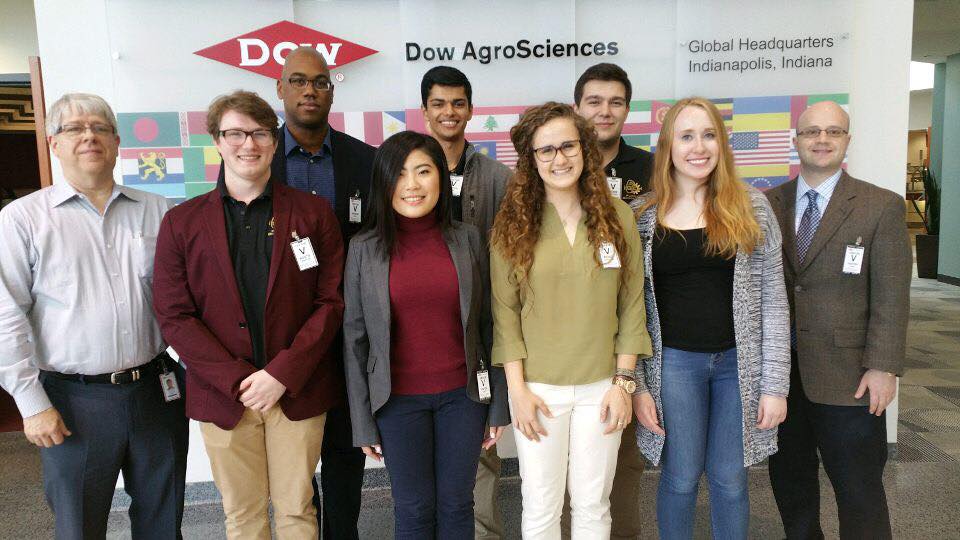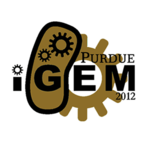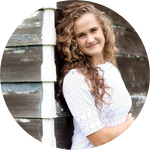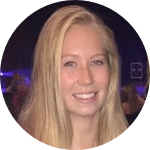Project Results
About This Project
We are engineering two strains of E. coli: one to uptake phosphorus so as to prevent toxic algal growth in lakes and streams and another to express electrically conductive projections, known as nanowires, in order to generate energy from organic waste. By expressing these genes in E. coli - a model organism - we hope to provide a platform for further study in agriculture, the environment, and alternative energy.
Ask the Scientists
Join The DiscussionWhat is the context of this research?
Phosphorus is a nonrenewable resource essential in agriculture, yet projections estimate that global phosphorus could be all but depleted in 30-40 years. Still, excess phosphorus in lakes causes algae growth that harms the ecosystem[1]. Wastewater treatment is a key place to prevent phosphorus from entering lakes while also allowing the phosphorus to be harvested for further use.
Microbial fuel cells (MFCs) are systems that accept wastewater and use bacteria to reduce metals and organic matter to produce an electric current. Currently we know little about which bacteria can grow and function inside of MFCs, but by introducing nanowires like those present in Shewanella bacteria into E. coli (a model organism), we hope to allow the biological aspect of MFCs to be engineered.
What is the significance of this project?
A self-contained unit where grimy water goes in (polluted by industry, agriculture, and daily living) and clear water of high enough quality for human consumption comes out would revolutionize water treatment. In underdeveloped areas this unit would provide access to clean drinking water without regard for source, and in industrialized society it would easily and succinctly remove all possible impurities in one step with the possibility of recovering these important nutrients for later use.
What are the goals of the project?
We will transform E. coli with genes the polyphosphate-accumulating bacterium Microlunatus phosphovorus and characterize the expressed proteins, which have yet to be characterized. Then, we will assess the ability of our E. coli to uptake luxury amounts of phosphorus. From there, we will build an adaptable prototype in order to remediate phosphorus in various applications. Based on literature [1],[2],[3],[4],[5],[6],[7] we identified 16 genes from Shewanella oneidensis that appear necessary for nanowire structure and function. We will integrate those genes into E. coli. After production of nanowires in E. coli, we will design a prototype for a microbial fuel cell and desalination cell using our modified E. coli. We will present our research at the iGEM Giant Jamboree in late October.
Budget
Expenditures for this project include supplies for assays, primers, general lab equipment, and lab consumables
Phosphorus uptake functional assays include Neisser stain, a two-part assay to determine total extracellular phosphorus concentration with acid digestion and ascorbic acid coloration steps, and a protocol to extract and quantify intracellular polyphosphate.
Nanowire gene expression and functional assays include steady-state kinetics analysis for metal ion reduction, protein film voltammetry, knockout competition assays, polyhistidine tagging, and tunneling electron microscopy.
As such, we expect a cost of approximately $1,500 for assays.
Other Lab supplies and equipment have been identified and budgeted accordingly.
Endorsed by
Meet the Team
Affiliates
We are a team of several bold undergraduate researchers majoring in biological engineering, biochemistry, biomedical engineering, and biology.
Team Bio
The 2016 Purdue iGEM team is comprised of 7 undergraduate students, 2 graduate student advisors, and 2 faculty advisors. We have a great project idea this year and are starting to make it a reality. We just need funding now to do even better in the competition than before.
Purdue iGEM
The International Genetically Engineered Machine (iGEM) Foundation is dedicated to education and competition, advancement of synthetic biology, and the development of open community and collaboration. In 2012, iGEM spun out of MIT and became an independent nonprofit organization located in Cambridge, Massachusetts, USA. iGEM fosters scientific research and education by establishing and operating the Registry of Standard Biological Parts, a community collection of biological components. The organization promotes the advancement of science and education by developing an open community of students and practitioners in schools, laboratories, research institutes, and industry.
Caleigh Roleck
Hello! I am a rising junior in biochemistry here at Purdue University, with minors in biotechnology and statistics. This year, I have the honor of serving as the project director for Purdue’s iGEM project. When not doing iGEM, I also conduct research on Agrobacterium-mediated genetic transformations of plants. Last year, I served as the Director of Events, and this upcoming year, I will serve as the treasurer for Purdue’s Pugwash chapter, an organization dedicated to the promotion of ethics and social responsibility in science and technology. I was awarded the Astronaut Scholarship in 2017, a scholarship the acknowledges undergraduates that express creativity and initiative in STEM research. After graduation, I hope to earn a PhD in biochemistry and then to pursue a career as a government or military scientist.
Paige Rudin
As a rising sophomore undergraduate student biomedical engineering student with minors in global engineering and Spanish, I plan to pursue a PhD and career in neuroengineering research. In addition to iGEM, I am currently involved in a project researching a delivery method for alpha-gal nanoparticles to aid in nerve regeneration at the site of spinal injuries.
Suraj Mohan
I am currently an undergraduate student at Purdue University majoring in Biological Engineering (concentration in Cellular and Molecular Engineering) and minoring in Biotechnology. I have been involved with a synthetic biology project that looks into comparing the efficiencies of genome integration techniques for E.coli bacteria, with a further goal of being able to improve E.coli resistance to extracellular stress for biofuel and pharmaceutical uses. In addition, I have worked on developing a lignocellulosic pretreatment for biomass to improve the yield efficiencies of ethanol producing bioreactors. In the future, I plan on pursuing a M.S in Biotechnology and working in industry through a R&D department of a biotechnology or pharmaceutical company.
Emma Foster
I am a rising junior majoring in biological engineering with a concentration in cellular and biomolecular engineering while also minoring in dance. I am still deciding on my post-graduation plans with industry and graduate school in mind. This is my first year in iGEM and can’t wait to get started this summer. Previously, I worked on primer design and general E. coli transformations for a project in the biomedical engineering department at Purdue University.
Bowman Clark
I am a rising junior in Biology and plan to get a PhD in Synthetic Biology to continue research and eventually pass on the joy of synbio as a professor. This is my second year in iGEM, and as head of the team I have very ambitious plans for our project this year. I hope we can achieve all requirements to receive a gold medal this year, but also hope to lead the team to a first place victory at the Giant Jamboree.
Barrett Davis
Hi! I am an undergraduate student at Purdue University majoring in biomedical engineering and minoring in global engineering and electrical and computer engineering. Outside of iGEM this year I have been involved in helping kickstart a medical device design club on campus and just recently helped enter a year long project in the NIH’s DEBUT challenge and the BMES student design competition. After Purdue I plan on obtaining an M. Eng. and transitioning to research in industry.
Additional Information
Facebook: https://www.facebook.com/pages/Purdue-Biomakers/522495097787205
Twitter: https://twitter.com/PurdueBiomakers
Google+: https://plus.google.com/115465447343686721859/posts
Email: PurdueBiomakers@gmail.com
Website: http://purduebiomakers.com/
Banner Credits: Shewanella oneidensis image by Rizlan Bencheikh and Bruce Arey, Environmental Molecular Sciences Laboratory, DOE Pacific Northwest National Laboratory

Project Backers
- 51Backers
- 103%Funded
- $3,090Total Donations
- $60.59Average Donation









